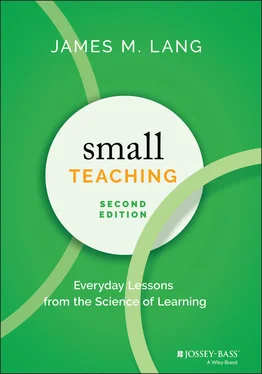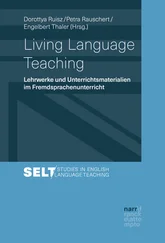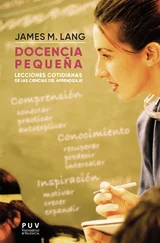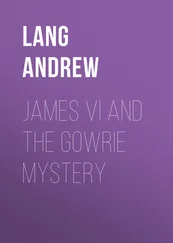Principles: I hope and expect that instructors will not simply follow the models, but also will take the overall strategy and develop their own new models. The principles provide guidance for creating your own small teaching strategies.
Quick Tips: One-sentence reminders of the simplest means of putting the small teaching strategies of that chapter into practice; flip through or return to these when you have 15 minutes before class and need a quick tip for an engaged learning activity.
Conclusion: A final reflection on the main theory or strategy of the chapter.
I hope that your first reading of each chapter will help you see immediately how to make changes to your teaching that will benefit your students. But I hope as well that you can continue to rely on the book long after your first reading. Keep it handy and flip through it every now and again or whenever you feel the need to try something new and different in your classroom. Use the book to spark new or newly invigorated conversations on your campus about how we can best help our students learn and about how we can best promote positive change in higher education. Finally, when you are ready to further explore the literature on teaching and learning in higher education, and move beyond these specific recommendations, review the reading suggestions in Chapter Ninefor more ideas. I have attempted to keep the references in the chapters as spare as possible, in order not to overwhelm new readers to this field or force them to hunt down articles in specialized journals. Throughout the book I sought to support my claims about small teaching, whenever possible, by pointing readers to accessible books that offer good analyses or overviews of the research on human learning.
The small teaching models and principles that you will find in the chapters ahead can be taken singly, as one-time spurs to innovation in a specific course session or unit plan, but they could also be combined to create an entirely new approach to your teaching. If you are reading this book over a break, while you are not teaching, see if you can draw systematically from each of the three major parts of the book as you plan your next course, creating a comprehensive strategy for boosting student learning in your classroom. But if you are reading it during the middle of the semester, shift your focus from the forest to the trees. Select one activity or course modification, and commit to it for the rest of the semester. Make sure you give new activities time to flower; nothing works exactly as we might hope it would on the first attempt, so it might take several iterations before activities like opening or closing prediction exercises really begin to pay dividends. And as I will argue in the conclusion, search for ways to evaluate the effects of your small teaching changes and determine whether they belong in your permanent teaching repertoire. Enlist the help of the teaching and learning center on your campus, if you have one, to help you better understand how to measure the impact of specific changes to your teaching on student learning. Students are not the only ones who will benefit from new learning as the result of small teaching, in other words; you can use these activities to take a more systematic approach to your own teaching, thinking deliberately about implementing, measuring, and modifying a range of possible teaching strategies in ways that will keep you learning and growing as a teacher throughout your career.
But we shouldn't get too far ahead of ourselves, and worry yet about your whole career. I will assume that you have class tomorrow, or next Monday, or at least within the next month or two, and you're looking for ideas.
Let's start small.
Imagine the media storm that erupted in 1956 upon the publication of an educational book with the attention-grabbing title of Taxonomy of Educational Objectives: The Classification of Educational Goals, Handbook I: Cognitive Domain . The author of this spine tingler was psychologist Benjamin Bloom, who sought to articulate a set of objectives that teachers could use to guide their instructional activities. In spite of its eye-glazing title, the book's content ultimately became a sacred text for educational theorists and administrators everywhere, giving them both a conceptual framework and a vocabulary to articulate what they expected learners could achieve in their classrooms. The taxonomy that Bloom created contains six major categories: Knowledge, Comprehension, Application, Analysis, Synthesis, and Evaluation. A quick glance over the six categories would suggest that they follow a progression from lower to higher orders of complexity, from a static possession of knowledge to more creative forms of thinking in the categories of synthesis and evaluation. Indeed, the taxonomy is often depicted in the shape of a pyramid, with knowledge at the bottom and evaluation or creation at the apex.
Unfortunately, this visual image of Bloom's taxonomy as a pyramid, which all teachers have likely encountered at some point in their lives, has led many higher education instructors to view Bloom's categories in a distorted way. When you think of a pyramid, after all, where do you want to be? At the top, of course. Nobody wants to be down on the bottom row of a pyramid, crushed by the weight of the rising layers, unable to reach for the cognitive stars. So some instructors seem to believe that the learning of facts or concepts, or helping students remember facts and concepts—or even procedures or basic skills—falls beneath them; they are interested only in higher order activities like critical thinking or making judgments or creating new knowledge. College instructors seem especially prone to this desire to hop over the bottom layer of the pyramid—or, more charitably, to assume either that elementary and secondary educators should have helped students learn how to remember things or that students should master knowledge outside of class and class time can be exclusively devoted to higher cognitive activities. In recent years such instructors have used a new argument to justify their dismissal of the knowledge category of Bloom's taxonomy: the omnipresence of search engines. Why should we bother to help students remember facts, so this argument runs, when all of the facts of the entire world are available to them at the touch of a fingertip? Facts now come in the form of smartphones. Let the Internet provide students with the facts, and we will instead focus our energies on the higher cognitive activities that make use of those facts.
Appealing though it might be to offload the responsibility for teaching our students basic knowledge to their elementary school teachers or to Google TM, the research of cognitive psychologists who study learning and the basic study habits of most students suggest that we cannot do this. One of our first and most important tasks as teachers is to help students develop a rich body of knowledge in our content areas—without doing so, we diminish considerably their ability to engage in cognitive activities like thinking and evaluating and creating. As cognitive psychologist Daniel Willingham has argued, you can't think creatively about information unless you have information in your head to think about. “Research from cognitive science has shown,” he explains, “that the sorts of skills that teachers want for their students—such as the ability to analyze and think critically— require extensive factual knowledge” (Willingham 2014, p. 25). We have to know things, in other words, to think critically about them. Without any information readily available to use in our brains, we tend to see new facts (from our Internet searches) in isolated, noncontextual ways that lead to shallow thinking. Facts are related to other facts, and the more of those relationships we can see, the more we will prove capable of critical analysis and creative thinking. Students who don't bother to memorize anything will never get much beyond skating over the surface of a topic.
Читать дальше












